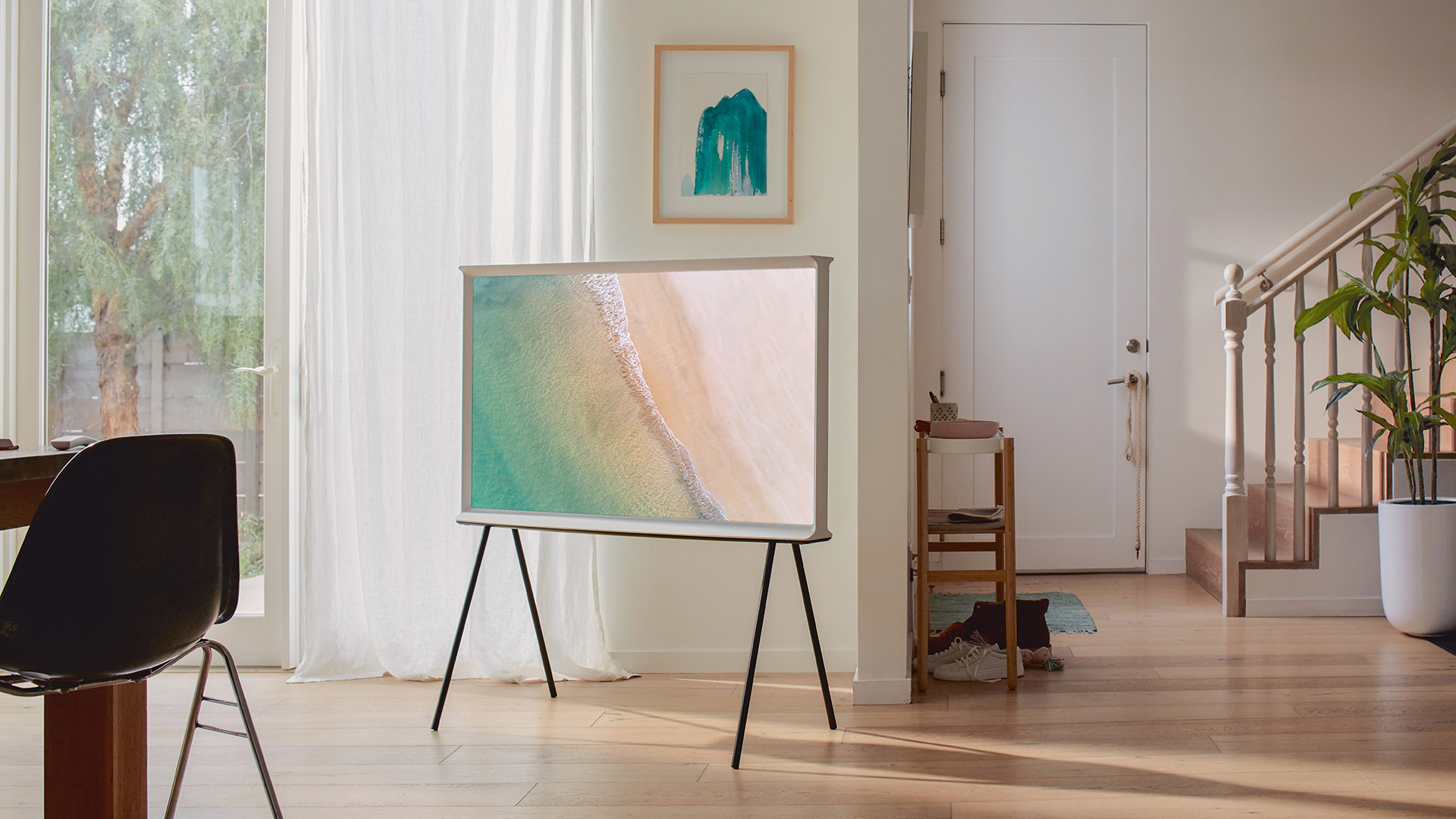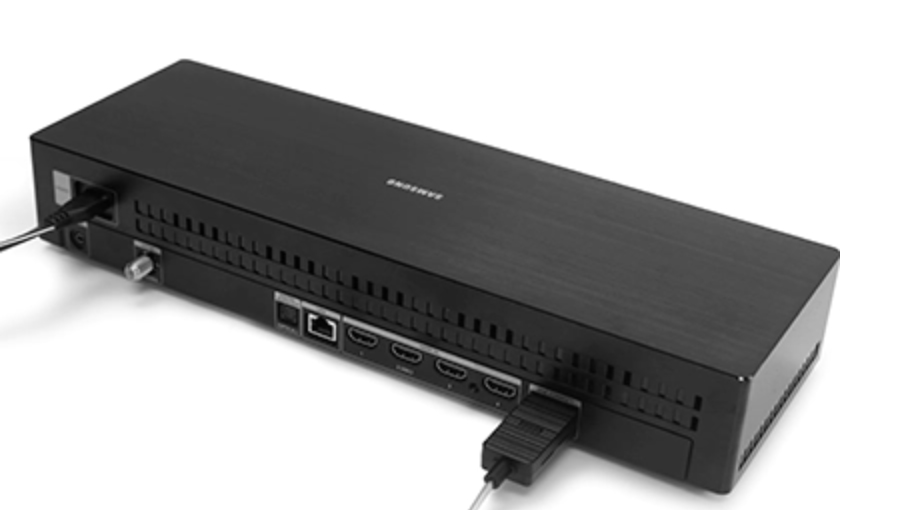Samsung OneConnect box is still a marvel, so why do so few Samsung TVs get it?
What happened to the Samsung OneConnect box?

If you’ve ever bought a new Samsung TV with the OneConnect box, you’ll know the perks to a sleek cabling solution – one that outsources all those pesky inputs and cable ports away from your sightlines, helping to keep the area around your TV clear and prevent yourself scrabbling around the back of the television to plug in a PS4 or soundbar.
A standard sight for Samsung’s designer TVs – like the painting-esque The Frame, the three-legged Serif, or rotating Sero – the One Connect box is an accessory that melds style with convenience, and it’s no surprise that Samsung had big plans for the device. It's been around in some form for several years, whether as an optional accessory or one bundled in with selected 4K TVs, and appeared in TechRadar's TV reviews since 2014.
The OneConnect box isn’t quite as widespread in 2020 as we might have expected, though. While Samsung’s nifty box was initially intended as a standard feature across its QLED range, you’ll now find it on a far smaller fraction of new TVs than in 2019.
Last year, every Samsung TV from the Q85R upwards – meaning the Q90R 4K QLED and Q900R 8K QLED – came with the OneConnect box, as did Samsung’s designer TVs, the Serif and The Frame.
This year, out of the main 2020 QLED range, only the Samsung Q95T 4K QLED and Q950TS 8K QLED come with the OneConnect box – despite a tripling of 8K QLEDs since 2019 and far larger premium range. In fact, there are even dedicated alternatives, the Q90T and Q900T, which offer OneConnect-free versions of both sets respectively.
That seems to move in the reverse direction we’d have expected, for a hardware accessory designed to enhance the majority – if not the entirety – of the Samsung TV range. So what happened?

Every dollar counts
Speaking to Samsung, we were told that, while the OneConnect box was initially viewed as a universal cabling solution, customers had different ideas.
Sign up for breaking news, reviews, opinion, top tech deals, and more.
Some apparently preferred (or, at least, were used to) built-in ports and inputs, while others simply didn’t want to be forced to pay for an accessory that probably added $200 / £200 / AU$300 to the overall cost of the television.
“The box system is actually quite expensive to make,” a Samsung rep told us. Given it essentially turns a TV into two separate hardware devices – one that inputs, and one that displays – that price markup is pretty unsurprising, and it means that what could have become a standard feature of new Samsung TVs has been relegated to the sidelines.
That’s not necessarily a bad thing – for shoppers, it’s probably more helpful to have the choice over whether that cabling solution is going to set you back any extra expense.
But it does raise questions over what smart TV manufacturers can do to keep their product neat and not beset with piles of tangled cables, without adding a bit uptick to the price.

The need for cables
It may be surprising in 2020 that we're still so reliant on cabling technologies.
The predicted rise of wireless HDMI solutions never quite happened, largely due to the growth of WiFi as an over-the-air data sharing technology. This means we're still largely relying on cables to connect additional hardware – and even in 2019 we found ourselves struggling to get decent Bluetooth audio from a high-end OLED TV, the LG E9. For now, wires are still part of the deal.
Wired transfer is still more stable, and new and improved standards like HDMI 2.1 – which allow for 4K video at 120Hz, or 8K video at 60Hz – mean it's not falling behind wireless technologies either.
Even without the OneConnect box, though, new Samsung TVs are generally good at keeping their cables in order. QLED sets will often feature a fissure in the casing that allows a cable to be partially held in place, while the Panasonic HZ1500 uses a kind of wire clip to tie up loose sections of wires at the back of the TV. Both are smart options, and mean an external cabling solution isn't as necessary – even if the OneConnect box is a good amount better at keeping things tidy than these half-measures could be.

Henry is a freelance technology journalist, and former News & Features Editor for TechRadar, where he specialized in home entertainment gadgets such as TVs, projectors, soundbars, and smart speakers. Other bylines include Edge, T3, iMore, GamesRadar, NBC News, Healthline, and The Times.